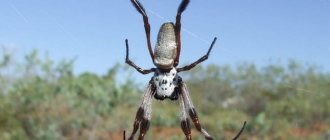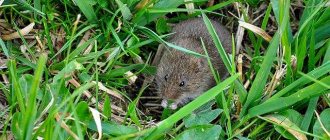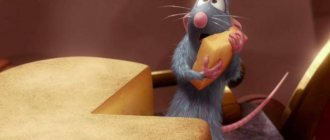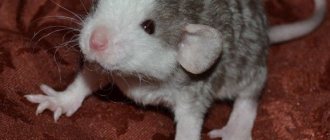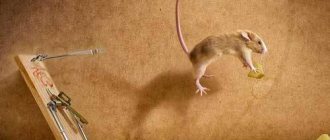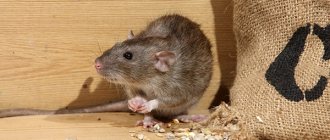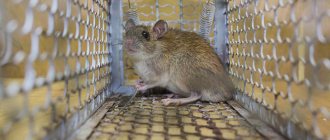How tiny are baby mice?
There are large mice, but the little ones are the smallest, which is why they got their name. The length of their body does not exceed 7 cm. The length of the tail is proportional to the body. These are the mice that fit in the smallest palm.
Size also determines lifestyle. In natural conditions, babies do not dig holes; they make homes in the grass, building something resembling a nest. The special moments in their lifestyle do not end there. These little mice quickly climb trees, do not hibernate, can easily tolerate cold, and are not against snacking on protein products, that is, worms, insect larvae or someone's eggs.
The fur of the babies is ocher, yellowish, sometimes with red. The belly, tips of the ears and muzzle are white. In nature, these mice live everywhere, but due to the fight against pests of crops, gardens and vegetable gardens, their numbers have dropped significantly. It is most likely to meet babies in their natural habitat in the Caucasus, in the southern regions of Yakutia and Great Britain.
Are wood mice big?
This species of rodent got its name because of its habitat. These rodents settle in clearings, forest edges, and can also live in thickets of forests. This is not a very large mouse, the body length of the forest animal reaches 10 cm, and the tail rarely grows beyond 7 cm. But these mice are well-fed. The average weight of the animals is 20 grams, which is quite decent for such a not particularly large rodent.
Their fur color is dark - black, brown, red. The muzzle is specific - the nose is long and sharp. In addition to the shape of the nose, a distinctive feature of these animals is their gigantic ears, in comparison with the size of the head. Interestingly, it was from the wood mouse that such a world-famous cartoon character as Mickey Mouse was copied.
Average sizes determine the lifestyle of mice. These mice live differently, adapting to existing conditions. They can settle in tree hollows, dig deep burrows, or simply roost for the night among the branches or roots of trees.
Maned Acerodon / Acerodon jubatus
The tailless bat grows up to 29 cm in length and weighs from 700 grams to 1.2 kg. The muzzle is elongated and slightly resembles a dog’s, which is why they are often called flying dogs.
Lives in the Philippine Islands, except Palawan. It lives at an altitude of 1,100 m above sea level in tropical rainforests and mangroves. Like most fruit bats, it is nocturnal, and during the day it hangs upside down in the foliage of tropical trees. The diet contains fruits of tropical plants, and they are very fond of figs.
The fur on the body is dark in color, but the head and shoulders are light orange, sometimes completely yellow. Powerful wings allow you to cover long distances, including over the surface of the sea.
3
Are gerbils big or small?
This mouse, kept at home in our country, is in most cases a descendant of Native American females. The first gerbils were brought from the USA in the last century as laboratory material, an alternative to the classic white ones. In natural conditions in Russia you can find dwarf or Mongolian gerbils. In total, there are more than a hundred varieties of mice of this type in the world, both small and large.
Gerbils have different sizes and colors, but all species have the following in common:
- tassel on the tail;
- small ears compared to the head;
- pink or almost white nose;
- blunt muzzle shape;
- large eyes that make the animal look like a cartoon character drawn in anime style.
The main distinguishing feature of gerbils is their lack of a characteristic mouse odor. These animals are ideal pets for people prone to allergies. The size of gerbils depends on their immediate species - from babies 6-7 cm to large mice 12-13 cm in length, excluding the tail.
Not so helpless
The Germans still managed to build “those” two prototypes. Well, like “two” - more like one and a half, because there was only one turret per pair of chassis. But this was more than enough for the test.
"Mouse" on sea trials
Oddly enough, the two-hundred-ton car performed well - the Mouse drove, overcame slopes, and was controlled easily and without any problems. It was even relatively nimble in maneuvering - well, for its size.
True, in the process the testers got carried away and drove the tank into a swampy area, where it happily got stuck up to the tower.
The problem was solved without any special frills, by bringing in 20 soldiers with shovels and several large jacks.
Soldiers unearth "Mouse" during testing in the winter of 1943-44
The conclusion was clear - the tank could easily move across the battlefield and be useful. But one and a half “Maus” did not survive to meet the enemy - when the Soviet troops approached, the tanks were mercilessly blown up.
The Russians, having received the disabled prototypes, showed interest in them - they were used to assemble a slow-moving tank. It was brought near Moscow and fired at in Kubinka, after which it was deposited there. Fortunately, the unique product was not melted down, and today the heaviest trophy in the world can be seen in the Cuban Tank Museum.
A Soviet soldier inspects a blown-up Maus at a training ground in Kummersdorf
Large voles?
This mouse is a rodent that is a character in folk and original fairy tales. It is voles who carry grain, live in barns and, in principle, prefer to live in close proximity to humans. The minimum body length of this animal is 7 cm. However, how large a vole mouse will grow depends on its diet. In rural barns, little mice can grow into larger animals than their counterparts born among the steppe feather grass.
A distinctive feature of this species of rodents, which distinguishes voles from all others, is the length of the tail. The proportional ratio with the body is 1:3. This species of mouse has a hamster mentality - they build pantries, constantly replenish food supplies and live in burrows with a lot of “rooms”.
Do house mice grow big?
The most common species of rodents that can be found everywhere. The house mouse is an animal that lives close to humans and actively uses this neighborhood. This mouse can be found in city landfills, in garbage chutes of apartment buildings, in attics, basements, stores - everywhere.
Its body length starts from 6 cm, but some individuals can be much larger. The tail of brownies is either equal to the length of the body, or slightly shorter. In favorable conditions, house mice often grow up to 10 cm, but they can also cross this threshold.
The coat color is gray, the muzzle is proportional, the ears are small and tightly pressed. The eyes are black, slightly protruding, they are called “beady”, very expressive and mobile.
Are white mice always small?
This is a visually familiar small white mouse that lives in scientists’ laboratories, pet stores or petting zoos. In nature, there are no such rodents as an independent species, but albinos are found among all breeds of mice.
The size of such mice is small, on average they grow up to 10 cm. However, their body length and coat structure depend on genetics. Such a mouse may be smaller if there were babies among its ancestors, and larger if there are genes of mountain rodents in its veins.
What size is the largest rodent?
In nature, a large mouse is a rarity. For the middle climatic zone, the following mouse sizes are typical: length up to 13 cm, excluding the tail, weight within 50 grams.
Of course, growing at home can achieve large sizes with the help of a special diet. However, it is still impossible to grow a giant from a small ordinary mouse. Experiments were conducted in British institutes to increase the size of mice. The scientists' work involved various ways of influencing the body - from irradiation to stimulation of individual areas of the brain. However, they did not achieve any significant results; as a rule, the mice died during the experiments.
Among the terrestrial species, the largest rodent grows up to 17 cm in length and weighs an average of 60 grams. The length of the tail is equal to the body. The animal looks more like a small rat than a mouse. The largest rodent lives in the mountains, in the southern regions. That's what the mouse is called - a mountain mouse.
White-winged vampire / Diaemus youngi
An inhabitant of the forests of South and Central America reaches a body size of up to 11 cm in length, and a wingspan of up to 40 cm. The white-winged vampire weighs 40 grams.
The body is covered with silky soft fur of brown with a red tint. The eyes are large and sparkle in the dark. This species does not have a tail, but has rather large ears on its head. They prefer to stay in small groups of up to 30 individuals.
Hunts in the dark, drinking blood from small bird species. Sometimes they settle near human habitation, and then they can drink the blood of small domestic animals, such as goats, sheep, and poultry. During the day they rest in caves or hollows of large trees.
5
Are there giant mice?
There really are giants among mice. But they do not walk on the ground, but fly through the air. According to the Guinness Book of Records, the largest mouse is the giant fruit bat, which lives in Asia, the islands of Oceania, Australia and, of course, Africa.
This animal is one of the varieties of flying foxes and has amazingly beautiful golden, light red or yellowish fur. Fruit bats are strict vegetarians. They do not adhere to a complete “night mode”; you can see the flight of these mice during the daytime.
The size of winged golden mice is impressive. The wingspan in flight averages 1.8-2 meters. Body weight – from 1.5 kilograms. Body length – from 50 centimeters. Winged giants, of course, do not have a tail.
Dimensions and external features of the flying fox
The size of this fruit bat is truly amazing - adult individuals grow up to 55 cm in length, and their wingspan can be at least 180 cm. Giant golden foxes can weigh from 0.6 to 1.5 kg. The largest bat in the world has large bulging eyes and a small tail. The tawny muzzle is pointed, and the ears of the largest bat in the world are quite small. The back of this animal is ash-black interspersed with white stripes.
